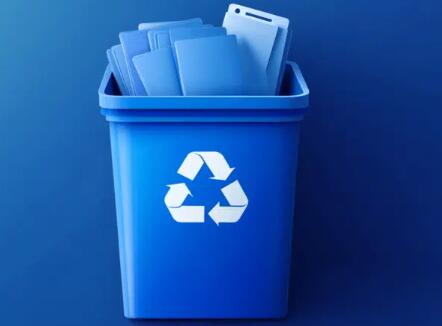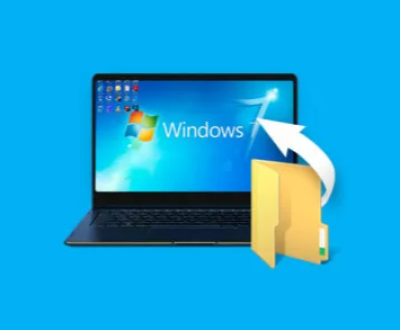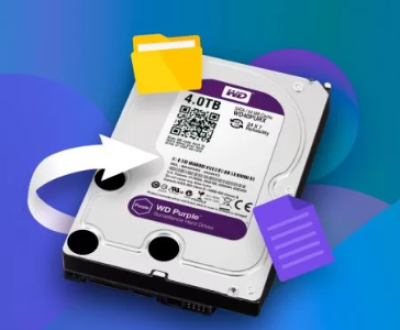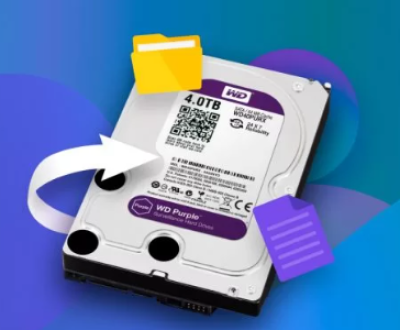The Recycle Bin on Windows and similar trash or bin features on other operating systems serve as a temporary storage for deleted files. They provide a safety net, allowing users to easily restore files that were accidentally deleted. However, there are times when the Recycle Bin is emptied, or files seem to disappear from it under unusual circumstances. In such cases, it’s crucial to know how to recover those files without relying on third-party software.
For Windows Users
Method 1: Restore from the Recycle Bin Itself
The simplest and most straightforward method is to check if the files are still in the Recycle Bin and restore them directly.

Locate the Recycle Bin: On the Windows desktop, look for the Recycle Bin icon. It’s usually represented by a trash can symbol.
Open the Recycle Bin: Double-click on the Recycle Bin icon to open it.
Find the Deleted Files: Scroll through the list of files and folders in the Recycle Bin to locate the ones you want to recover. You can use the sorting options (by name, date deleted, etc.) to make it easier to find the specific files.
Restore the Files: Select the files or folders you want to recover. You can do this by clicking on each item while holding down the Ctrl key for multiple selections. Then, right-click on the selected items and choose “Restore” from the context menu. Alternatively, you can click on the “Restore this item” option in the Recycle Bin toolbar for a single file or “Restore all items” to restore all the files in the Recycle Bin. The files will be restored to their original locations.
Method 2: Use System Restore
System Restore can be a useful tool for recovering deleted files if a restore point was created before the files were deleted.
Open System Restore: Press the Windows key + R to open the Run dialog box. Type “rstrui.exe” and press Enter. This will open the System Restore window.
Choose a Restore Point: In the System Restore window, click “Next”. You’ll see a list of available restore points. Select a restore point that was created before the files were deleted. It’s often a good idea to choose the most recent one that meets this criterion.
Confirm and Start the Restore: Click “Next” again and then “Finish” to start the system restore process. The computer will restart and restore the system to the selected restore point. This may take some time. After the restore is complete, check if the deleted files have been recovered.
Method 3: Check Previous Versions
Windows has a feature called Previous Versions that can sometimes contain copies of deleted files.
Locate the Folder: Navigate to the folder where the files were originally located before they were deleted.
Right-click on the Folder: Right-click on the folder and select “Properties”.
Go to the Previous Versions Tab: In the Properties window, click on the “Previous Versions” tab. Here, you’ll see a list of previous versions of the folder that Windows has saved.
Check for Deleted Files: Look through the previous versions to see if the deleted files are present. If they are, you can select a specific previous version and click “Restore” to restore the entire folder with the deleted files or “Open” to view the files and copy them to a different location.
Method 4: Use Command Prompt
The Command Prompt can also be used to recover deleted files from the Recycle Bin in some cases.
Open Command Prompt as Administrator: Press the Windows key + X and select “Command Prompt (Admin)” from the menu.
Navigate to the Recycle Bin Folder: The Recycle Bin is usually located in the C:$Recycle.Bin folder. Use the “cd” command to navigate to this folder. For example, type “cd C:$Recycle.Bin” and press Enter.
List the Contents of the Recycle Bin: Use the “dir” command to list the files and folders in the Recycle Bin. You’ll see a list of files with strange names. These are the deleted files.
Identify the Deleted Files: Look for the files you want to recover. The file names in the Recycle Bin are usually in a format like “D”, where is a unique identifier. You can try to match the file sizes and dates to identify the correct files.
Copy the Files to a New Location: Use the “copy” command to copy the identified files to a new location. For example, if you want to copy a file named “D123” to the Desktop, you can type “copy D123 C:\Users\YourUserName\Desktop” and press Enter. Replace “YourUserName” with your actual Windows username.
For Mac Users
Method 1: Restore from the Trash
Similar to the Recycle Bin on Windows, the Trash on Mac is the first place to look for deleted files.
Locate the Trash: The Trash icon is usually located in the Dock at the bottom of the screen. It looks like a trash can.
Open the Trash: Click on the Trash icon to open it.
Find the Deleted Files: Scroll through the list of files in the Trash to find the ones you want to recover. You can use the search bar in the Trash window to search for specific file names.
Restore the Files: Select the files you want to recover and then click on the “Put Back” button in the Trash window. This will restore the files to their original locations.
Method 2: Use Time Machine
Time Machine is a backup feature on Mac that can be used to recover deleted files if it’s been enabled and backups have been made.
Connect the Time Machine Backup Drive: If the Time Machine backup drive is not already connected, connect it to your Mac.
Open Time Machine: Click on the Time Machine icon in the menu bar and select “Enter Time Machine”. This will open the Time Machine interface.
Navigate to the Deleted Files: Use the timeline on the right side of the screen to go back in time to a point before the files were deleted. Navigate to the folder where the files were originally located and look for the deleted files.
Recover the Files: When you find the deleted files, select them and click the “Restore” button. The files will be restored to their original locations on your Mac.
Method 3: Check for iCloud Drive Versions
If you were using iCloud Drive to store the files and have the “Versions” feature enabled, you may be able to recover deleted files.
Open the iCloud Drive Folder: In the Finder, click on “iCloud Drive” in the sidebar.
Locate the File: Navigate to the folder where the deleted file was located.
Right-click on the File: Right-click on the file (or the folder if the file was in a folder) and select “Show Package Contents” if available. Then look for a “Versions” folder. If there is no “Show Package Contents” option, try Control + clicking on the file and see if the option appears.
Check for Previous Versions: In the “Versions” folder, you may find previous versions of the file. Look for the version that contains the deleted content and copy it to a new location or replace the current file with it.
For Linux Users
Method 1: Restore from the Trash Folder
Most Linux desktop environments have a trash folder similar to the Recycle Bin on Windows and the Trash on Mac.
Locate the Trash Folder: The location of the trash folder can vary depending on the desktop environment. In GNOME, it’s usually located in the user’s home directory under “.local/share/Trash”. In KDE, it’s often in “~/.Trash”.
Open the Trash Folder: Use the file manager to navigate to the trash folder. You may need to enable the option to show hidden files and folders to see it.
Find the Deleted Files: Browse through the files in the trash folder to find the ones you want to recover. The files are usually organized in folders like “files” and “info”. The actual files are in the “files” folder.
Restore the Files: Select the files you want to recover and move them back to their original locations. You can do this by cutting the files from the trash folder and pasting them to the appropriate destination folder.
Method 2: Use Backup Tools
If you have been using backup tools like rsync or tar to create regular backups, you can restore the deleted files from the backups.
Locate the Backup Files: Find the backup files that contain the data you want to recover. These could be stored on an external drive, a network location, or another storage device.
Restore the Files: The process of restoring files depends on the backup tool used. For example, if you used rsync to create backups, you can use the rsync command again to copy the files from the backup location to the original location. If you used tar to create backups, you can use the “tar” command to extract the files from the backup archive.
About us and this blog
Panda Assistant is built on the latest data recovery algorithms, ensuring that no file is too damaged, too lost, or too corrupted to be recovered.
Request a free quote
We believe that data recovery shouldn’t be a daunting task. That’s why we’ve designed Panda Assistant to be as easy to use as it is powerful. With a few clicks, you can initiate a scan, preview recoverable files, and restore your data all within a matter of minutes.
Subscribe to our newsletter!
More from our blog
See all postsRecent Posts
- Recover deleted files windows 2025-07-02
- How to recover previous excel file 2025-07-02
- How to recover files that are permanently deleted 2025-07-02

 Try lt Free
Try lt Free Recovery success rate of up to
Recovery success rate of up to









